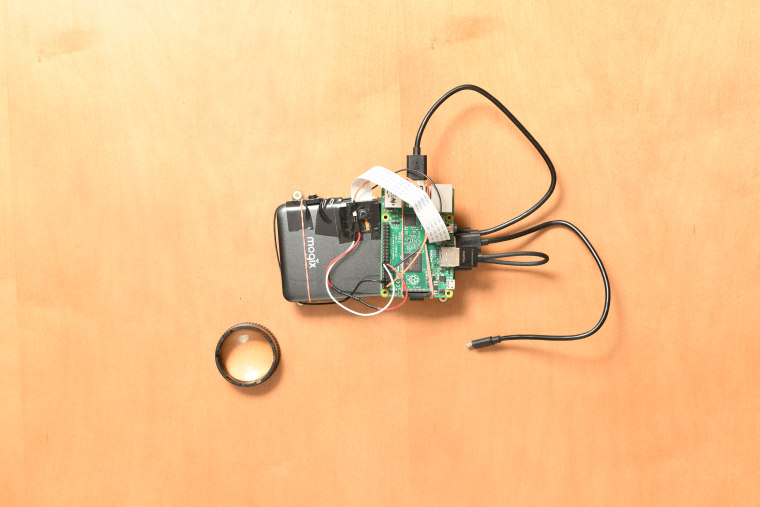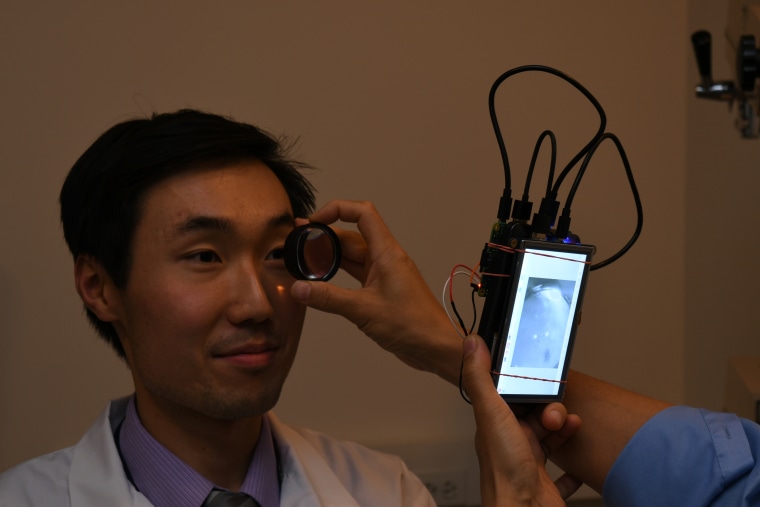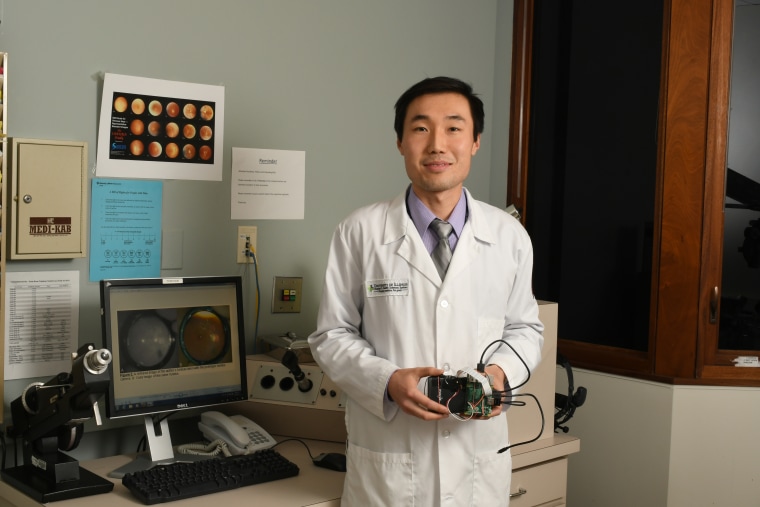No one likes eye exams — and it's not hard to see why. To get a good look inside the eye, and to photograph the retina and optic nerve, ophthalmologists need to dilate a patient's pupils. This requires eye drops that can sting and cause blurry vision and sensitivity to light for up to a few hours.

Now researchers have developed a retina camera that can take photos of structures inside the eye without the need for those annoying drops. Instead, a doctor focuses the pocket-sized prototype camera on the back of the eye using infrared light, which, unlike the white light from retina cameras commonly used by eye doctors, doesn't cause the pupil to constrict. Then a color image is snapped with a white flash before the pupil shrinks.
"A less expensive and portable device will expand the screening range to even the field," says Dr. Shizuo Mukai, a professor of ophthalmology at Harvard and leader on the project. He and Dr. Bailey Shen, an ophthalmologist at the UIC College of Medicine, built the device out of spare smartphone parts, LEDs, and a computer hobby kit, all bought online for $185.
Their findings were reported in the Journal of Ophthalmology.
It’s not the first device of its kind — at least one with similar capabilities is now on the market. But the researchers say their prototype has key advantages, including a wider field of view inside the eye.
Related: This Tiny Device Is a ‘Game Changer’ for People Facing Blindness
But we’re not done with the doctor's office yet. More research and development are necessary before devices like this replace those commonly used by ophthalmologists, says Dr. Rahul Khurana, clinical spokesperson for the American Academy of Ophthalmology. “We need to see how accurate it is in comparison to the gold standard."
Still, Khurana is hopeful the prototype will spur innovation and make eye exams easier and more accessible in rural areas and developing countries, during emergency situations, and for bedridden patients. “We can be optimistic that this is an exciting new technology,” he says.

The researchers don’t intend to manufacture or sell the device. Instead they've made its plans available to doctors and tech hobbyists with hopes they'll improve on the design. Mukai says he expects software advances that will enhance images for better diagnosis, and cardboard VR viewers could be used as a simple housing that one day would allow self-diagnosis via retina "selfies.”
There's plenty of work to be done, including determining a way to better align the camera with the eye. But Shen has his sights set on the future. As he says, "My dream is that, as an ophthalmology resident, I can carry a little USB camera dongle in my white coat that I can plug into my smartphone whenever I want.”
